





















The Equal Educational Opportunities Act is enacted on August 21, 1974.

The new law addressed civil rights issues in education, barring states from discriminating against students based on gender, race, color or nationality and requiring public schools to provide for students who do not speak English. In many ways, the EEOA was an extension of the Civil Rights Act of 1964, which banned racial discrimination in schools as well as businesses and outlawed the segregation of schools.
W !" # $%?
Understanding Inflation and Economic Recovery: What You Need to Know


Inflation and economic recovery are two big ideas that have a huge impact on our daily lives. While these terms may sound complicated, understanding them can help us make better decisions about our money. In this blog, we’ll break down what inflation is, how it affects us, and what economic recovery means.
We’ll also explore how these factors influence consumer spending, investments, and economic policies.
Faith News Today does not own the rights to the pictures, articles, or videos shared in this publication. We are sharing information for the expressed purposes of education and entertainment only!
Flip through the pages of our third addition to find our rich and colorful history of FAITH, EDUCATION, & WEALTH. Black Americans have excelled in those areas for hundreds of years. Our ancestors relied heavily on their faith in God to survive the brutal and harsh life that was theirs to endure. I hope you get to know some religious and spiritual leaders who shared the Word of God as they experienced and understood it.
You’re watching session one of the 8-session course of Black Church Studies on Seminary Now. Watch the full session here: https://seminarynow.com/ programs/black-church
What is the Black church?
What role has it played in the culture and liberation of Black Americans throughout US history?
Rev. Dr. Marshall Hatch takes viewers on a journey ...
Many Christians struggle with the issue of tithing. In some churches giving is over-emphasized.

At the same time, many Christians refuse to submit to the biblical exhortations about making offerings to the Lord. Tithing/giving is intended to be a joy and a blessing.
Sadly, that is sometimes not the case in the church today. See the article inside as you flip through the pages!
Stay Tuned for our healthcare issue
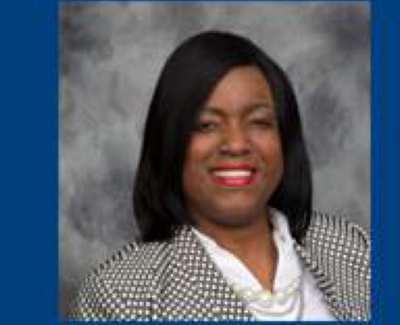
I am honored to be among these esteemed nominees. Thanks La. Nurses Association for providing such opportunities for nursing recognition.
Honoring Excellence in Nursing

Leadership
Proud to spotlight the incredible nominees for the 2025 Leading the Way Awards at the LSNA Membership Assembly!
From outstanding board members and volunteers to impactful district events and student leadership, these individuals and districts are making a powerful difference in nursing across Louisiana.
Congratulations to all the nominees—your work does not go unnoticed.
#LSNA #NurseLeaders #RecognitionMatters
#LeadingTheWay #NursingExcellence
#ProfessionalPride
the Publisher
At the Her Legacy, Her Future event I stated that FNT was going “Somewhere!” I believe we have the right platforms and some pretty awesome folks to spotlight which will garner a following not just in my home state of LA or state of residency of TX, but around the world!

In addition to sharing your work and stories with us we would love for you to advertise your business and ministry with FNT. As we take this publication around the world—go with us! To date this page has been viewed 100 times!
See more reactions below

Why does God allow bad things to happen to good people?
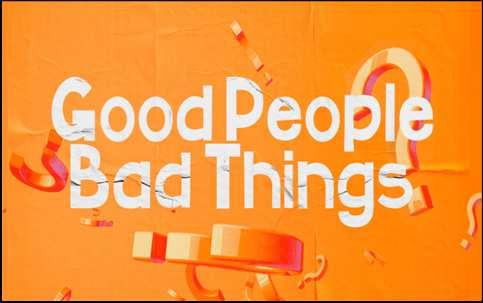
We live in a world of pain and suffering. There is no one who is not affected by the harsh realities of life, and the question “why do bad things happen to good people?” is one of the most difficult questions in all of theology. God is sovereign, so all that happens must have at least been allowed by Him, if not directly caused by Him. At the outset, we must acknowledge that human beings, who are not eternal, infinite, or omniscient, cannot expect to fully understand God’s purposes and ways.
The book of Job deals with the issue of why God allows bad things to happen to good people. Job was a righteous man (Job 1:1), yet he suffered in ways that are almost beyond belief. God allowed Satan to do everything he wanted to Job except kill him, and Satan did his worst. What was Job’s reaction? “Though he slay me, yet will I hope in him” (Job 13:15). “The LORD gave and the LORD has taken away; may the name of the LORD be praised” (Job 1:21). Job did not understand why God had allowed the things He did, but he knew God was good and therefore continued to trust in Him. Ultimately, that should be our reaction as well.
Why do bad things happen to good people? As hard as it is to acknowledge, we must remember that there are no “good” people, in the absolute sense of the word. All of us are tainted by and infected with sin (Ecclesiastes 7:20; Romans 3:23; 1 John 1:8).
As Jesus said, “No one is good—except God alone” (Luke 18:19). All of us feel the effects of sin in one way or another. Sometimes it’s our own personal sin; other times, it’s the sins of others. We live in a fallen world, and we experience the effects of the fall. One of those effects is injustice and seemingly senseless suffering. God allows things to happen for a reason. Whether or not we understand His reasons, we must remember that God is good, just, loving, and merciful (Psalm 135:3).

Why does God allow good things to happen to bad people?
This question is similar to its opposite: "Why does God allow bad things to happen to good people?" Both questions refer to what seems to be the perplexing injustice we witness every day. The 73rd Psalm is our answer to the very same questions that also tormented the psalmist. Finding himself in terrible distress and agony of soul he writes, “But as for me, my feet had almost slipped; I had nearly lost my foothold. For I envied the arrogant when I saw the prosperity of the wicked” (Psalm 73:2-3).
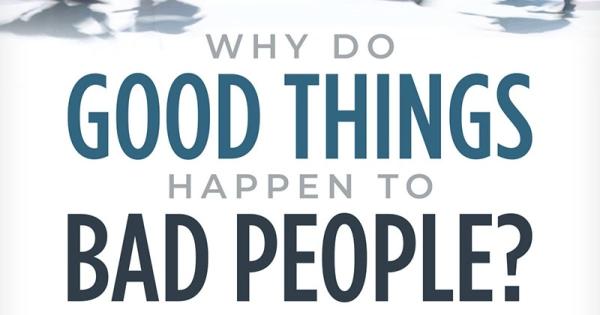
The writer of this Psalm was a man named Asaph, a leader of one of the temple choirs. Obviously, he was not a wealthy man, but rather one who had dedicated his life to serving God (see 1 Chronicles 25). But, like us, he had experienced some difficulties and questioned the injustice of it all. He watched the evil people around him living by their own rules, enjoying all the wealth and pleasures of the world and collecting riches. He complains, "They have no struggles; their bodies are healthy and strong. They are free from the burdens common to man; they are not plagued by human ills" (Psalm 73:4-5).
When Asaph entered the sanctuary of God, he began to see that there was no need for him to be envious of the prosperity of the wicked because their prosperity is an illusion. He began to comprehend that the ancient deceiver, Satan, had used lies to distract him from the reality of God. Upon entering the sanctuary, Asaph realized that prosperity is a fleeting fulfillment, like a pleasant dream that pleases us only for a little while but, when we awaken, we realize it was not real. Asaph rebukes himself for his own stupidity. He admits to being “senseless and ignorant” to envy the wicked or to be jealous of the perishing. His thoughts then returned to his own happiness in God when he realized how much more joy, fulfillment, and true spiritual prosperity he had in the Creator. (Scan the code for more)

We can learn to be a cheerful giver by studying the greatest giver this world has ever known: JESUS CHRIST.

Many Christians struggle with the issue of tithing. In some churches giving is overemphasized. At the same time, many Christians refuse to submit to the biblical exhortations about making offerings to the Lord. Tithing/giving is intended to be a joy and a blessing. Sadly, that is sometimes not the case in the church today.
Tithing is an Old Testament concept. The tithe was a requirement of the Law in which the Israelites were to give 10 percent of the crops they grew and the livestock they raised to the tabernacle/temple (Leviticus 27:30; Numbers 18:26; Deuteronomy 14:24; 2 Chronicles 31:5). In fact, the Old Testament Law required multiple tithes—one for the Levites, one for the use of the temple and the feasts, and one for the poor of the land—which would have pushed the total to around 23.3 percent. Some understand the Old Testament tithe as a method of taxation to provide for the needs of the priests and Levites in the sacrificial system.
After the death of Jesus Christ fulfilled the Law, the New Testament nowhere commands, or even recommends, that Christians submit to a legalistic tithe system. The New Testament nowhere designates a percentage of income a person should set aside, but only says gifts should be “in keeping with income” (1 Corinthians 16:2). Some in the Christian church have taken the 10 percent figure from the Old Testament tithe and applied it as a “recommended minimum” for Christians in their giving.
Although no tithe is demanded of the Christian, the New Testament talks about the importance and benefits of giving. We are to give as we are able. Sometimes that means giving more than 10 percent; sometimes that may mean giving less. It all depends on the ability of the Christian and the needs of the body of Christ. Every Christian should diligently pray and seek God’s wisdom in the matter (James 1:5). Above all, offerings
should be given with pure motives and an attitude of worship to God and service to the body of Christ. “Each man should give what he has decided in his heart to give, not reluctantly or under compulsion, for God loves a cheerful giver” (2 Corinthians 9:7).

Why is giving so emphasized in the Christian faith?
“To whom much has been given, much more will be expected.” This has become a common phrase in Western society. Its biblical roots are in Luke 12:48. Because we have been so freely loved, we now love others (John 13:34). Because we have been forgiven, we forgive others (Matthew 18:21-35). Our response to God’s abundance with us is to share that abundance with others.
Generosity has positive effects in human relationships. When one person gives freely to another, the recipient often “passes forward” the gift. In the Christian life, the impetus is much greater. Jesus taught us that “it is more blessed to give than to receive” (Acts 20:35).
Not only does our giving demonstrate God’s character to the world, it results in increased faith for us. When we are willing to give, we declare that our faith does not depend on material possessions. Instead, we show that our faith is in God, who is always faithful to provide (1 Kings 17:7-16).



When dozens of brutal race riots erupted across the U.S. in the wake of World War I and the Great Migration, black veterans stepped up to defend their communities against white violence.
The ink had barely dried on the Treaty of Versailles, which formally ended World War I, when recently returned black veterans grabbed their guns and stationed themselves on rooftops in black neighborhoods in Washington D.C., prepared to act as snipers in the case of mob violence in July of 1919. Others set up blockades around Howard University, a black intellectual hub, creating a protective ring around residents.
White sailors recently home from the war had been on a days-long drunken rampage, assaulting, and in some cases, lynching black people on the capitol’s streets. The relentless onslaught proved contagious, escalating in dozens of cities across the U.S. in what would become known as the
The Red Summer.
The racist attacks in 1919 were widespread, and often indiscriminate, but in many places, they were initiated by white servicemen and centered upon the 380,000 black veterans who had just returned from the war. “Because of their military service, black veterans were seen as a particular threat to Jim Crow and racial subordination,” notes a report by the Equal Justice Initiative.
Indeed, many African American soldiers returned from the war armed with a renewed determination to fight segregation and a near-constant barrage of brutality.
https://www.history.com/articles/red-summer-1919-riotschicago-dc-great-migration
A postal official wrote at the time that “As far back as the first movement of the American troops to France, the negro publicists began to avail themselves of the argument that since the negro was fit to wear the uniform he was, therefore, fit for everything else.” In Texas, a federal agent reported, “One of the principal elements causing concern is the returned negro soldier who is not readily fitting back into his prior status of pre-war times.”
During the Red Summer, massive anxiety became mass violence. Between April and November of 1919, there would be approximately 25 riots and instances of mob violence, 97 recorded lynchings, and a three day long massacre in Elaine, Arkansas during which over 200 black men, women, and children were killed after black sharecroppers tried to organize for better working conditions. The Ku Klux Klan, which had been largely shut down by the government after the Civil War, experienced a resurgence in popularity and began carrying out dozens of lynchings across the south.
Just a few years earlier, many young black men had heeded Wilson’s call to make the world “safe for democracy” and gone off to fight for America in one of history’s bloodiest wars. Now they had come back to a country that recognized neither their service nor their humanity.
Black veterans were a large part of what made the summer of 1919, in the words of historian David F. Krugler, the year that African Americans fought back.
“This is the country to which we Soldiers of Democracy return. This is the fatherland for which we fought!”
The conclusion of the summer of 1919 would not be the end of mass violence against black Americans—far from it.
“World War I was very much a broken promise for basically all African Americans, but the people who felt the brokenness of that promise most acutely [were the veterans.] Scan the QR Code to read the entire article!

By: Sarah Prui
Updated: May 10, 2024 | Original: June 2, 2015 Updated: May 10, 2024 | Original: June 2, 2015
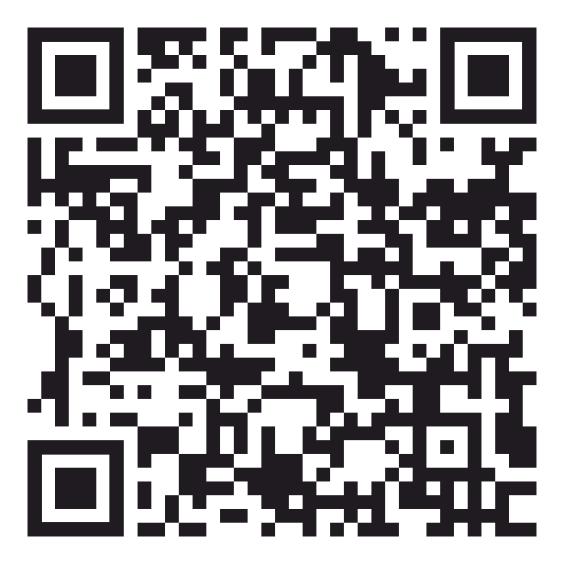
In 1917, H " % J "? " was working as a railroad porter in Albany, New York, when the United States declared war on Germany. Little did he know that his heroics in that war—helping protect France's western front by tenaciously fighting off a German raiding party of nearly two dozen—would earn him a posthumous Medal of Honor nearly a century later. Johnson is one of only two Black World War I veterans to receive the medal, America's highest commendation for valor in combat.

At the time the U.S. entered the war, before the Selective Service Act introduced conscription, African American volunteers were only allowed in four all-Black regiments in the Army and a few National Guard units. Johnson enlisted in the 15th New York National Guard Regiment, which was converted into the 369th Infantry Regiment for the purposes of the war.
The regiment belonged to the largely Black 93rd Division of the American Expeditionary Force, a hastily assembled division that would be among the first American forces to arrive in France. After their exploits in France—where they fought fiercely—they would be given the nickname the “Harlem Hellfighters.”
When the 369th first shipped over to France, the U.S. Army issued them inferior, castoff gear and used them only for manual labor jobs. But in the early months of 1918, with France stretched to its limits in its struggle against Germany, U.S. General John Pershing lent the 369th to fight for the French Army— though he made it clear he considered Black soldiers inferior to their white counterparts. In fact, Pershing went even further in his directive to the French Military Mission, writing that the Black man lacked a
“civic and professional conscience” and was a “constant menace to the American.” To their credit, the French paid little attention to Pershing’s warnings. They sent the 369th to the western edge of the Argonne Forest, in the Champagne region of France. Johnson's valor, along with that of his Black compatriots, would prove Pershing and other detractors wrong about the intelligence, commitment and bravery of Black soldiers.
Outfitted with French military gear superior to what they'd been given by their own army, Johnson and another private, 17-year-old Needham Roberts of New Jersey, were serving sentry duty on the night of May 15, 1918, when German snipers began firing on them. Johnson began throwing grenades at the approaching Germans; hit by a shrapnel from a German grenade, Roberts could only pass more of the small bombs to Johnson to lob at the enemy. When he exhausted his supply of grenades, Johnson began firing his rifle, but it soon jammed. By then, the Germans had surrounded the two privates, and Johnson, who was just 5' 6" and 130 pounds, used his rifle as a club until the butt splintered. He saw the Germans attempting to take Roberts prisoner and charged at them with his only remaining weapon, a bolo knife.
Johnson stabbed one soldier in the stomach and another in the ribs, and was still fighting when more French and American troops arrived on the scene, causing the Germans to retreat. When the reinforcements got there, Johnson fainted from the 21 wounds he had sustained in the one-hour battle. All told, he had killed four Germans and wounded some 10 to 20 more.
For his actions in what one journalist later called "the Battle of Henry Johnson," the French awarded both Johnson and Roberts the Croix de Guerre; Johnson’s included the coveted Gold Palm for extraordinary valor. In all, some 500 members of the Harlem Hellfighters earned the Croix de Guerre during World War I, showing France’s appreciation for their sacrifice. By the end of the war, the 369th had spent more continuous days on the front lines—191—than any other American unit.
By Dr. LaRachelle Samuel-Smith, Co-Author of Black to the Future: Lessons from Black Wall Street for Community and Economic Prosperity
We live in an era where history competes with headlines, where stories of sacrifice and legacy are often overshadowed by fleeting trends and constant noise. But as people of faith— many of us veterans of life, ministry, and military service—we know that the real work is often quiet, consistent, and built on the shoulders of those who came before us.
This is why Black to the Future was written. Not just to remember—but to reignite.
The stories of Tulsa’s Black Wall Street are often reduced to the 1921 tragedy, but what happened before the massacre was far more powerful: a thriving community where Black men and women owned businesses, financed homes, educated their children and worshiped freely. They didn’t just survive. They succeeded—together!
That’s the heartbeat behind our new program series, From Heritage to Hustle: Money, Markets & Legacy Moves Launching inApril in honor of Financial Literacy Month, it’s not a seminar—it’s a spiritual assignment. It’s about taking the lessons from Black to the Future and applying them in our everyday lives.
As a community rooted in faith, we understand that stewardship is a spiritual principle. In the parable of the talents, Jesus honors the servant who multiplies what was entrusted to him. What has God placed in your hands to multiply?
Is it a family home?Amilitary pension?Achurch property?Asmall business dream you’ve set aside? We believe these are sacred assignments.
Ministers, community leaders, and veterans understand the meaning of service. But we must also lead—especially in financial stewardship. From
Heritage to Hustle teaches practical tools for:
Creating a legacy plan
Understanding how to pass on real estate and business assets
Building economic resilience through faith, family, and financial education
It’s not just about money—it’s about meaning. It’s about teaching our children how to walk in both wisdom and wealth.
To our veterans: You fought for freedom. Now it’s time to own it—financially. Your discipline, your leadership, and your experience are valuable tools for entrepreneurship and legacy planning.
Whether you’re transitioning into civilian life, retirement, or mentoring the next generation, this series was designed with you in mind.
Black to the Future isn’t just a history lesson; it’s a guidebook. It shows us how to reclaim ownership, build community wealth, and honor the resilience of those who came before us.
You can start by reading a chapter. Then come to the event. Then, teach what you’ve learned. That’s legacy!
We’re inviting veterans, retirees, ministers, and all community builders to join us for 'From Heritage to Hustle,' a virtual event series in April, in celebration of Financial Literacy Month. Let’s build not just wealth but wisdom. Not just income but impact.
Register today. Invite a friend. And let’s build what they started.
fromheritagetohustle.eventbrite.com
Because Heritage is what we’ve been given. Hustle is what we do with it.
Because Heritage is what we’ve been given. Hustle is what we do with it.

Educators, Community Leaders, and Entrepreneurs answered the call at the New Year New Vision event -- crafting a new vision for 2025

Veterans, Retirees, and Faithbased leaders came together for the "Her Legacy Her Future" program, calling their names and celebrating the legacy of iconic women in history.
Register today. Invite a friend. And let’s build what they started. fromheritagetohustle.eventbrite.com
Because Heritage is what we’ve been given. Hustle is what we do with it.
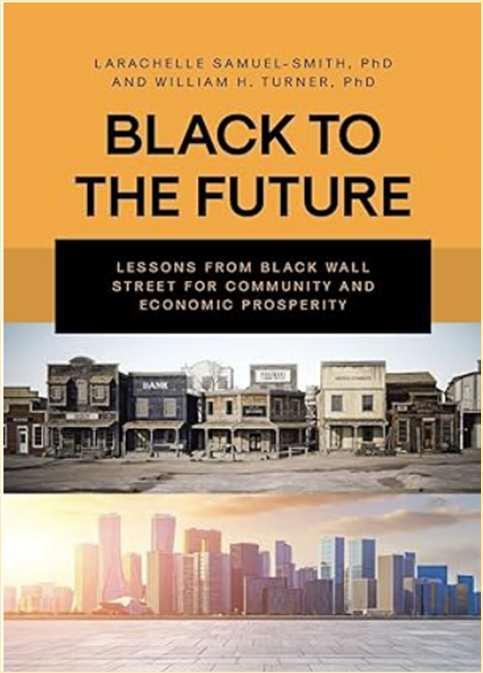
Whether the term Black Wall Street is familiar to you or not, this new e-book, Black to the Future: Lessons from Black Wall Street for Community and Economic Prosperity, will provide fresh insights into this community. Those insights include key takeaways for the present day. In it,
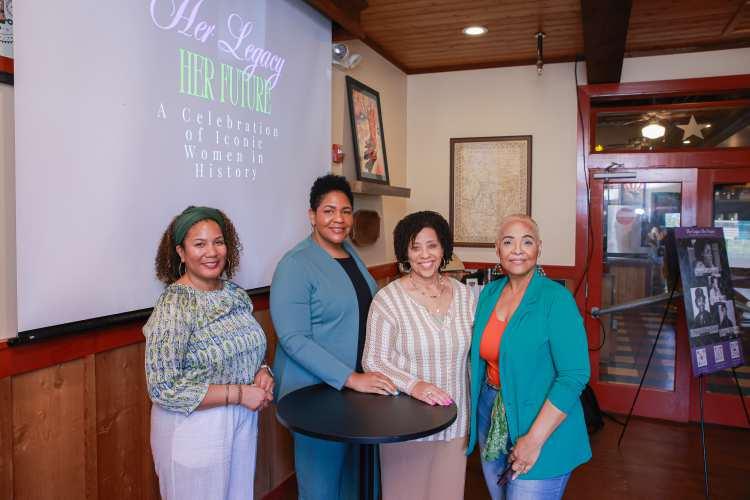


From Heritage to Hustle will appeal to students of all ages, financial strategists, and legacyminded community leaders, blending legacy, empowerment, and economic action.










In the first decades of the 20th century, African Americans faced grinding poverty and harsh racial restrictions. Many African American leaders fought against these evils and worked to bring justice to their communities. One such leader was Rosa Young of Alabama, whose drive and determination enabled her to spearhead the development of Black Lutheranism in the South.
In 1912, Young, then a 22-year-old Methodist, started a school for Black children in Wilcox County, Ala., but bad economic conditions threatened its survival. Young sought assistance from a number of groups and, in 1915, wrote a letter to the Lutheran Synodical Conference (a grouping of Lutheran synods) asking for assistance. To her surprise, the conference responded positively, supporting her school and sending pastors to the area to start Lutheran congregations.
Heartened by these developments, Young embraced Lutheranism with a passion. In Black Christians: The Untold Lutheran Story (Concordia, 1991) author Jeff Johnson describes Young as “determined, patient, persistent, and pushy in that unique southern manner that was always cloaked in polite, good manners. She was committed to one thing throughout her life: lifting up Black people in rural Alabama.” Young was responsible for more than just one school, becoming the driving force behind new Black Lutheran congregations and parish schools across the county.
By 1927 there were 29 Black Lutheran congregations and preaching points in the area, and 27 day schools. During this period Wilcox County was the fastest-growing area of Lutheranism in the United States.
During this period Wilcox County was the fastest-growing area of Lutheranism in the United States.
Young believed education was the future for her community and resolved to do something about the lack of good schools available to African Americans in rural Alabama. Declaring the public schools to be completely inadequate, she held that churches were
Four hundred years of Lutherans in North America By Mark Granquist February 4, 2021


obligated to provide education in their place. But the local congregations also lacked resources.
These schools and congregations, however, needed teachers and leaders. Young personally inspired a number of those around her to take leadership roles in this growing ministry. To provide more teachers and leaders, Alabama Lutheran Academy was founded in Selma in 1922, with a high school and teacher-training (“normal”) school. The academy eventually expanded to become Alabama Lutheran Academy and College, the first Lutheran institution of higher education to be staffed solely by

By Mark Granquist
February 4, 2021
African Americans.
The “Great Migration” of African Americans from the South during the 1920s and ‘30s weakened a number of these congregations and schools, but the Lutheran presence among those of African descent in Alabama continued, in great part due to the efforts of Young. One person can make a difference.

By Richard N. Stewart February 1, 2021
Care for and by children of God in Black skin has a long history in the Lutheran church, despite the impression one might have of the ELCA as currently a predominantly “white” denomination. What follows is a glimpse of significant early Black Lutheran contributions and records.
Historical records show that the first Lutheran baptism of an American of African descent occurred on Palm Sunday in 1669, when a man named Emmanuel was baptized at Evangelical Lutheran Church of St. Matthew in New Amsterdam (now New York City).
Not long after, in what is now Ghana, Anton Wilhelm Amo was born around 1700. Taken in 1704 as a slave to Germany, Amo was “gifted” to Anthony Ulrich, duke of Brunswick-Wolfenbüttel. He was raised in the household with the duke’s sons, attended the universities of Halle, Wittenberg and Jena, and eventually taught at those schools. His first dissertation, loosely translated, was “The Rights of an
African in Eighteenth Century Europe” (no copy exists). A second work was “The Apathy of the Human Mind.”
Today at Martin Luther University of HalleWittenberg in Germany, Amo is among the professors commemorated in the quadrangle, alongside reformers Martin Luther and Philipp Melanchthon.
The congregation of Zion Lutheran, Oldwick, N.J., remembers that their history began in the living room of Aree Van Guinea. He had purchased his and his family’s freedom while in New York City. Van Guinea bought land in the Raritan Valley, in what is now Oldwick. The first worship service, July 14, 1714, was at his house, when Van Guinea invited his pastor, Justus Falckner, to preach to his newly arrived neighbors who were Palatine Germans. Van Guinea deeded a portion of his property to build the first church there, which still stands on a corner in Oldwick.
Daniel Alexander Payne, a Black 19-year-old schoolteacher, turned to Bachman, who had written biology books with noted naturalist John Audubon, for advice and information about his future. When Black people were denied the right to teach or run schools in South Carolina, Bachman, among others, gave letters of introduction as they assisted Payne in moving north.
The Mission Society of Gettysburg (Pa.) Seminary offered Payne a scholarship, with the understanding that he did not want to be an ordained minister. An abolitionist speaker, he drew the attention of the Franckean Synod—a Lutheran church body formed in 1837 by New York pastors who were dissatisfied by the church’s position on slavery—which chose to offer him ordination. Within two years Payne had relocated to Philadelphia, reaffiliated with his Methodist roots and became a pastor, bishop and the president of Wilberforce (Ohio) University.

Historical records are spotty during the years of Reconstruction (1863-1877) and in the 1890s, but records can be found to identify the early contributions by Lutheran Black pastors.





Faith in God is trust in Him, based on a true understanding of who He is, as revealed in the Bible. Faith in God involves an intellectual assent to the facts concerning God and a life-changing reliance on those facts.
Faith in God has several components. The first is believing that He actually exists. However, simply believing that God exists is not enough. As James 2:19 explains, the demons believe in God’s existence as well.
After acknowledging that God exists, the second element of faith in God is commitment. Faith that does not result in action is a dead faith, not true faith (James 2:26).
However, even a faith in God that motivates us to action is not enough. For faith in God to be genuine, we must accept Him as He has revealed Himself in Scripture. We are not allowed to accept the attributes of God that we prefer and reject the ones we don’t. If we do not accept God as He is, then we are putting our faith in a false god of our own making. Much “religion” does exactly this, but any religion not based on the Bible is a designer religion with a designer god. For faith in God to be genuine, it must be based on the genuine God. For example, the God of the Bible is triune, so true faith in God must accept the deity and personality of the Son and the Holy Spirit as well as the Father.
There is much confusion today over the nature of faith. It is reported that, when asked to define faith, a little boy in Sunday school responded, “Believing what you know isn’t true.” Many of the “new atheists” place faith against science and evidence. They say that Christians have faith that God exists but that atheists have empirical evidence for science. Christians have faith, but scientists have knowledge. This comparison misunderstands the nature of faith in God.
Faith in God is not a blind leap without any evidence or, even worse, contrary to the evidence. Faith is simply trust. The Christian trusts in God. The scientific atheist has faith in science. If an atheist uses the scientific method to discover a medicine and then
takes that medicine, he is exercising faith. He trusts his data, and he trusts that the medicine will cure him, not poison him. Some people may take the medicine with no thought whatsoever as to how it was developed or as to who prepared it. Others may only take the medicine after thoroughly investigating every aspect of the research. One person may take it with great confidence while another person takes it tentatively. In the final analysis, anyone who takes the medicine is exercising faith in the medicine. Ultimately, it is not the strength of the faith that determines if the medicine will work, but the efficacy of the medicine. Great faith in bad medicine will not cure a person. It is the object of faith, not the strength of faith that makes the difference. Uncertainty about a good medicine will not hinder its efficacy, as long as it is taken as prescribed. Faith is not the opposite of doubt; in fact, doubt can exist even in the heart of faith (see Mark 9:24). A person can exercise faith (trust and commitment) while at the same time being unsure about the thing or person he has committed himself to. Someone once defined doubt as “faith seeking understanding.”
Some people may simply trust God because it seems intuitive. They may have been raised in a Christian home and taught the Bible from their earliest remembrance. They have seen God work in the lives of other people, and they simply trust Him. Others may only have come to faith after a thorough examination of the evidence for God. Whether the decision to trust the God of the Bible is intuitive or deliberative, it is the mark of genuine faith.
The atheist likewise may come to his atheism by intuition or after careful deliberation. In the end, he has faith that God does not exist because he trusts either his instincts or his investigation and commits himself to live in a way that is consistent with his beliefs. Contrary to the claims of the new atheists, everyone has some kind of faith—everyone trusts something. It is impossible to live without trusting in something, even if it is only in the reliability of our five senses The object of our faith is what makes all the difference.








We need to understand our position as Christians. Some people think Believers should not identify as Christians. As I’ve often pondered this, I will say— Know who you are and whose you are! FNT
The phrase king of kings is used in Scripture six times. Once, the title is applied to God the Father (1 Timothy 6:15), and twice to the Lord Jesus (Revelation 17:14; 19:16). The other three (Ezra 7:12; Ezekiel 26:7; Daniel 2:37) refer to either Artaxerxes or Nebuchadnezzar, kings who used the phrase to express their absolute sovereignty ove their respective realms (Persia and Babylon). The phrase lord of lords is used by itself in Scripture twice and refers to God the Father (Deuteronomy 10:17; Psalm 136:3).




the glory of God and the exact imprint of His nature, and He upholds the universe by the word of His power” (Hebrews 1:3). The next verse speaks of Jesus being “much superior” to the angels. Clearly, His rule over creation is absolute.
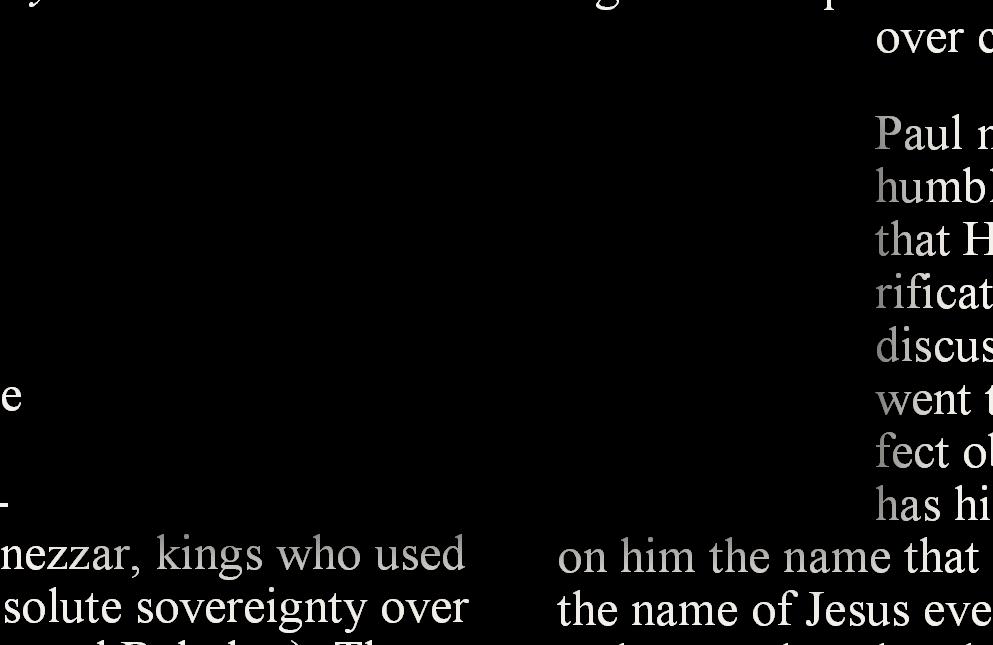

Paul makes the point that Jesus was humbled in His earthly ministry and that His humiliation will result in glorification. In Philippians 2:5–11, Paul discusses the extent to which Jesus went to atone for sinners; Jesus’ perfect obedience is the reason that “God has highly exalted him and bestowed on him the name that is above every name, so that at the name of Jesus every knee should bow, in heaven and on earth and under the earth, and every tongue confess that Jesus Christ is Lord, to the glory of God the Father” (vv. 9–11). The Suffering Servant becomes the King of kings (see Isaiah 53:10–12).
In Revelation 19:16 Jesus is given the full title “KING OF KINGS AND LORD OF LORDS” (Revelation 17:14 switches it: “Lord of lords and King of kings”). The title indicates someone who has the power to exercise absolute dominion over all His realm. In the case of the Lord Jesus, the realm is all of creation. In John’s vision, Jesus is returning to judge the world and establish His earthly kingdom, as He predicted in Mark 13:26.
When Jesus is called “King of kings and Lord of lords,” it means that, in the end, all other rulers will be conquered or abolished, and He alone will reign supreme as King and Lord of all the earth. There is no power, no king, and no lord who can oppose Him and win. There are myriad references to this absolute rule of Jesus and His preeminence over other rulers throughout Scripture. To mention just a few, Isaiah 40:23–24 says that the Lord brings “princes to nothing” and makes earth’s rulers “emptiness.” The mere breath of the Lord will “carry them off like stubble.” The vision in Daniel 7:13–14 is of one whom Daniel calls “the Ancient of Days”—God the Father—who gives an everlasting dominion over all people, nations, and languages to “one like a son of man“—God the Son. In the New Testament, we get a better view of the One these passages refer to. The writer of Hebrews speaks of the Lord Jesus: “He is the radiance of
Finally, in the book of Revelation we see the Kingship of Jesus made manifest. In chapter 5, the Lamb (Jesus) is the only one in all creation found worthy to open the scroll containing the judgments of God (vv. 2–5). In chapter 11, we hear voices in heaven proclaiming that the kingdom of the world has become the kingdom of Christ and that He will reign forever and ever (v. 15). In chapter 12, we read that the authority of Christ is what causes Satan to be thrown down to earth (vv. 9–10). In Revelation 17:12–14, the Lamb conquers all those arrayed against Him, and John stresses that He conquers because He is King of kings and Lord of lords. Finally, in chapter 19, we read of Jesus’ triumphant coming to strike the nations and tread the winepress of the wrath of God, having the authority to do so because He is King of kings and Lord of lords (vv. 11–16). Fundamentally, the idea of Jesus being King of kings and Lord of lords means that there is no higher authority. His reign over all things is absolute and inviolable. God raised Him from the dead and placed Him over all things, “far above all rule and authority and power and dominion, and above every name that is named, not only in this age but also in the one to come. And he put all things under his feet and gave him as head over all things to the church, which is his body, the fullness of him who fills all in all” (Ephesians 1:21–23).
Nannie Helen Burroughs

Nannie Helen Burroughs was born on May 2, 1879, in Orange, Virginia, to John and Jennie Burroughs, both former slaves. She was the eldest of five children. After the death of her younger sisters and her father, Ms. Burroughs and her mother relocated to Washington, D.C. where there were better opportunities for employment and education.
Upon graduating from M Street High School with honors in 1896, Ms. Burroughs sought work as a domestic science teacher in the District of Columbia Public Schools. Despite her qualifications, she was refused the position because her skin was “too black.” She was advised that they preferred lightercomplexioned Black teachers.
Ms. Burroughs later wrote that after that experience, “[a]n idea was struck out of the suffering of that disappointment — that I would some day have a school here in Washington that school politics had nothing to do with, and that would give all sorts of girls a fair chance. It came to me like a flash of light, and I knew I was to do that thing when the time came.”
The school’s motto read: “Work. Support thyself. To thine own powers appeal.”
In the first few years of its existence, the school provided evening classes for women who had no other means of education. There were only 31 students. However, after time, and due to its exceptional reputation, the school eventually attracted women from all over the nation. Ms. Burroughs required all students to take a history course that was dedicated to
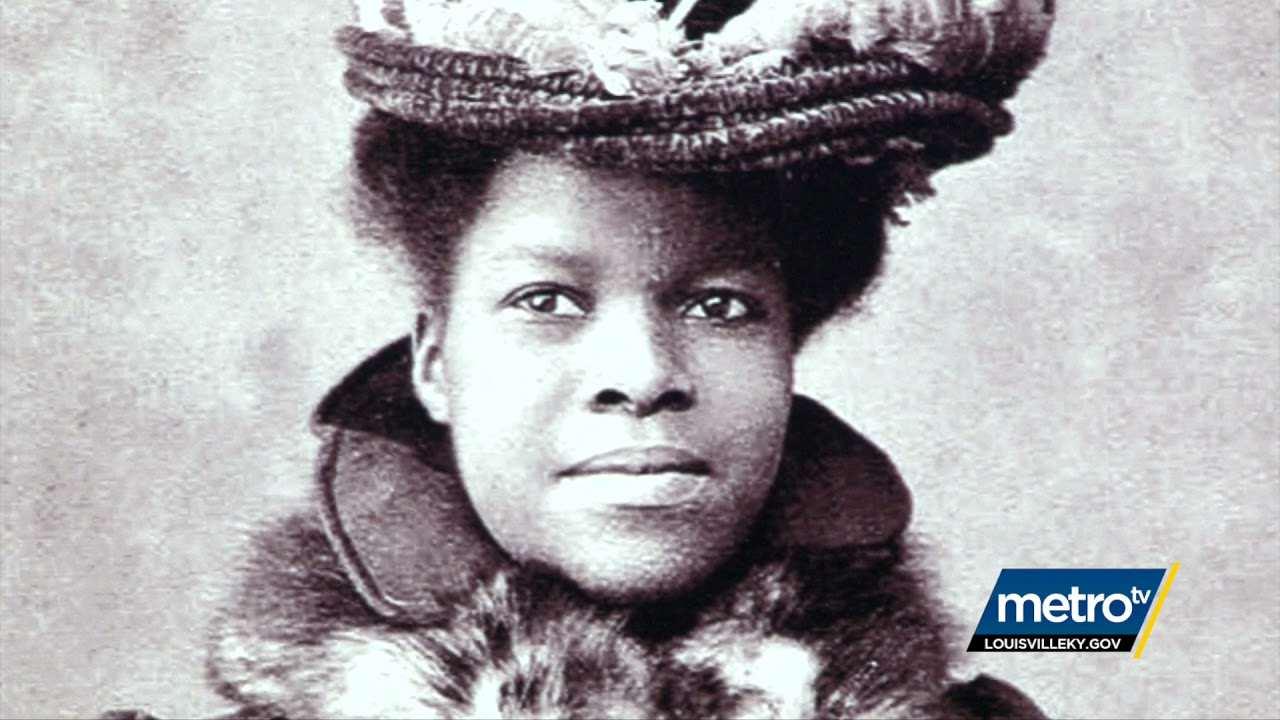
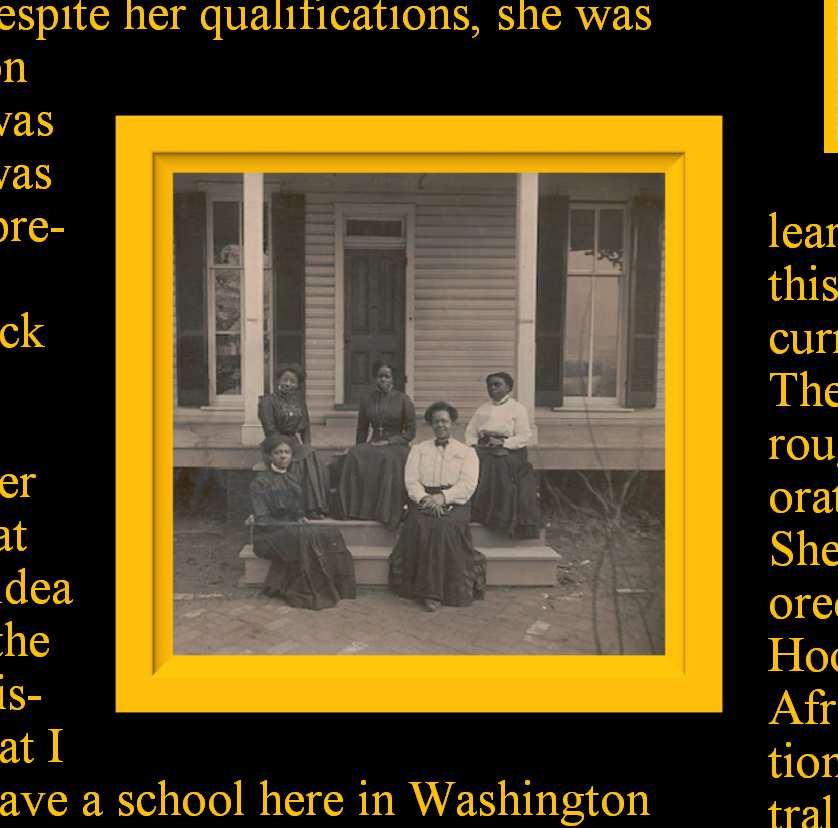
Ms. Burroughs continued to work and apply herself. She was employed as an editorial secretary and bookkeeper of the Foreign Mission Board of the National Baptist Convention. Committed to educating and inspiring young Black women and helping them understand their worth and value, Ms. Burroughs opened the National Training School in 1908, a school dedicated to the education of Black women.
Kimberley Guillemet Sep 1, 2022

learning about influential African Americans, since this topic was excluded from general historical curriculum in the U.S. at the time.
The school was only the beginning of Ms. Burroughs’ long and illustrious career as an educator, orator, businesswoman, religious leader and activist.
She helped found the National Association of Colored Women, was appointed by President Herbert Hoover to chair a special committee on housing for African Americans, founded the Women's Convention (serving from 1900 to 1947), and acted as a central figure in the network of African American suffragists.
After dedicating her life to educating and uplifting the overlooked of American society, Ms. Burroughs passed away on May 20, 1961, in Washington D.C. After her death, her school was renamed the Nannie Helen Burroughs School in her honor.


Known for her wisdom and insight, she was quoted as saying, “Education and justice are democracy’s only life insurance.”
World Changer of the Month — September 2022: Nannie Helen Burroughs

Many of our ancestors had to fight long and hard for FREEDOM. They stood for something! Today, if we don’t take a stand for something, we will fall for everything thrown our way! How do we stand today? In the climate we live in, we have to understand the blueprint left by our ancestors! FNT
The Underground Railroad was established to aid enslaved people in their escape to freedom. The railroad was comprised of dozens of secret routes and safe houses originating in the slaveholding states and extending all the way to the Canadian border, the only area where fugitives could be assured of their freedom. Shorter routes led south from Florida to Cuba or from Texas to Mexico. The Underground Railroad also included the smuggling of fugitive slaves onto ships that carried them to ports in the North or outside the United States.
The success of the Underground Railroad rested on the cooperation of former runaway slaves, free-born blacks, Native Americans, and white and black abolitionists who helped guide runaway slaves along the routes and provided their homes as safe havens. Although estimates of the number of people who escaped through the Underground Railroad between 1820 and 1861 vary widely, the figure most often cited is approximately 100,000.
The Underground Railroad derived its name from the terminology used throughout the routes. The railroad included conductors, including William Still, of Philadelphia, Pennsylvania, arguably the most prominent one. It also included agents, stations, stationmasters, passengers or cargo, and even stockholders. The conductors were the guides, agents helped slaves find their way to the routes of the Underground Railroad, the stations were hiding places usually homes, stationmasters were those that hid slaves in their homes, the cargo referred to escaped slaves, and stockholders were those that donated money to keep the Underground Railroad running.
The Underground Railroad worked as a series of networks. The journey north was an extremely long route and the Underground Railroad provided depots or safe houses along the way. Those that led the runaway slaves north did so in stages. No conductor knew the entire route; he or she was responsible for the short routes from station to station. Once the “cargo”

reached another station, it would be passed on to the next conductor until the entire route was traversed. This limited knowledge protected both the fugitive slaves and the integrity of the routes which sometimes extended over 1,000 miles.
The success of the Underground Railroad generated much animosity among slaveholders and their allies. Because previous measures had failed to disrupt the this system of slave escape, Congress passed the Fugitive Slave Act of 1850 which allowed slave owners, or their agents to call on Federal, state and local law enforcement officials in non-slaveholding states to assist in capturing fugitive slaves. The law was greatly abused. Slave-catchers started abducting free-born African Americans. Since African Americans could not testify or have a jury present at trial they usually could not defend themselves. The slavecatcher need only to swear an oath that the black man was in fact a runaway slave and they could then return the slave to its ‘owner’ for a reward. Ironically the Fugitive Slave Act increased Northern opposition to slavery and helped hasten the Civil War.
The Underground Railroad gave freedom to thousands of enslaved women and men and hope to tens of thousands more. Those who escaped became human witnesses to the slave system with many of them going on the lecture circuit to explain to Northerners the horrors of the servile institution. Others became members and supporters of the Underground Railroad. In both cases the success of the Underground Railroad hastened the destruction of slavery.
Passing as a white man traveling with his servant, two slaves fled their masters in a thrilling tale of deception and intrigue



Most runaway slaves fled to freedom in the dead of night, often pursued by barking bloodhounds. A few fugitives, such as Henry “Box” Brown who mailed himself north in a wooden crate, devised clever ruses or stowed away on ships and wagons. One of the most ingenious escapes was that of a married couple from Georgia, Ellen and William Craft, who traveled in first-class trains, dined with a steamboat captain and stayed in the best hotels during their escape to Philadelphia and freedom in 1848. Ellen, a quadroon with very fair skin, disguised herself as a young white cotton planter traveling with his slave (William). It was William who came up with the scheme to hide in plain sight, but ultimately it was Ellen who convincingly masked her race, her gender and her social status during their four-day trip. Despite the luxury accommodations, the journey was fraught with narrow escapes and heart-in-the-mouth moments that could have led to their discovery and capture. Courage, quick thinking, luck and “our Heavenly Father,” sustained them, the Crafts said in Running a Thousand Miles for Freedom, the book they wrote in 1860 chronicling the escape. Ellen and William lived in Macon, Georgia, and were owned by different masters. Put up for auction at age 16 to help settle his master’s debts, William had become the property of a local bank cashier. A skilled cabinetmaker, William, continued to work at the shop where he had apprenticed, and his new owner collected most of his wages. Minutes before being sold, William had witnessed the sale of his frightened, tearful 14-year-old sister. His parents and
brother had met the same fate and were scattered throughout the South. As a child, Ellen, the offspring of her first master and one of his biracial slaves, had frequently been mistaken for a member of his white family. Much annoyed by the situation, the plantation mistress sent 11-year-old Ellen to Macon to her daughter as a wedding present in 1837, where she served as a ladies maid. Ellen and William married, but having experienced such brutal family separations despaired over having children, fearing they would be torn away from them. “The mere thought,” William later wrote of his wife’s distress, “filled her soul with horror.”
Pondering various escape plans, William, knowing that slaveholders could take their slaves to any state, slave or free, hit upon the idea of fair-complexioned Ellen passing herself off as his master—a wealthy young white man because it was not customary for women to travel with male servants. Initially Ellen panicked at the idea but was gradually won over. Because they were “favourite slaves,” the couple had little trouble obtaining passes from their masters for a few days leave at Christmastime, giving them some days to be missing without raising the alarm. Additionally, as a carpenter, William probably would have kept some of his earnings – or perhaps did odd jobs for others – and was allowed to keep some of the money.
Before setting out on December 21, 1848, William cut Ellen’s hair to neck length. She improved on the deception by putting her right arm in a sling, which would prevent hotel clerks and others from expecting “him” to sign a registry or other papers. Georgia law prohibited teaching slaves to read or write, so neither Ellen nor William could do either. Refining the invalid disguise, Ellen asked William to wrap bandages around much of her face, hiding her smooth skin and giving her a reason to limit conversation with strangers. She wore a pair of men’s trousers that she herself had sewed. She then donned a pair of green spectacles and a top hat. They knelt and prayed and took “a desperate leap for liberty.” At the Macon train station, Ellen purchased tickets to Savannah, 200 miles away. As William took a place in the “negro car,” he spotted the owner of the cabinetmaking shop on the platform. After questioning the ticket seller, the man began peering through
the windows of the cars. William turned his face from the window and shrank in his seat, expecting the worst. The man searched the car Ellen was in but never gave the bandaged invalid a second glance. Just as he approached William’s car, the bell clanged and the train lurched off. Ellen, who had been staring out the window, then turned away and discovered that her seat mate was a dear friend of her master, a recent dinner guest who had known Ellen for years. Her first thought was that he had been sent to retrieve her, but the wave of fear soon passed when he greeted her with “It is a very fine morning, sir.” To avoid talking to him, Ellen feigned deafness for the next several hours.
In Savannah, the fugitives boarded a steamer for Charleston, South Carolina. Over breakfast the next morning, the friendly captain marveled at the young master’s “very attentive boy” and warned him to beware “cut-throat abolitionists” in the North who would encourage William to run away. A slave trader on board offered to buy William and take him to the Deep South, and a military officer scolded the invalid for saying “thank you” to his slave. In an overnight stay at the best hotel in Charleston, the solicitous staff treated the ailing traveler with upmost care, giving him a fine room and a good table in the dining room.
Trying to buy steamer tickets from South Carolina to Philadelphia, Ellen and William hit a snag when the ticket seller objected to signing the names of the young gentleman and his slave even after seeing the injured arm. In an effort to prevent white abolitionists from taking slaves out of the South, slaveholders had to prove that the slaves traveling with them were indeed their property. Sometimes travelers were detained for days trying to prove ownership. As the surly ticket seller reiterated his refusal to sign by jamming his hands in his pockets, providence prevailed: The genial captain happened by, vouched for the planter and his slave and signed their names.
Baltimore, the last major stop before Pennsylvania, a free state, had a particularly vigilant border patrol. Ellen and William were again detained, asked to leave the train and report to the authorities for verification of ownership. “We shan’t let you go,” an of-


ficer said with finality. “We felt as though we had come into deep waters and were about being overwhelmed,” William recounted in the book, and returned “to the dark and horrible pit of misery.” Ellen and William silently prayed as the officer stood his ground. Suddenly the jangling of the departure bell shattered the quiet. The officer, clearly agitated, scratched his head. Surveying the sick traveler’s bandages, he said to a clerk, “he is not well, it is a pity to stop him.” Tell the conductor to “let this gentleman and slave pass.”
The Crafts arrived in Philadelphia the next morning—Christmas Day. As they left the station, Ellen burst into tears, crying out, “Thank God, William, we’re safe!”
The comfortable coaches and cabins notwithstanding, it had been an emotionally harrowing journey, especially for Ellen as she kept up the multilayered deception. From making excuses for not partaking of brandy and cigars with the other gentleman to worrying that slavers had kidnapped William, her nerves were frayed to the point of exhaustion. At a Virginia railway station, a woman had even mistaken William for her runaway slave and demanded that he come with her. As predicted, abolitionists approached William. One advised him to “leave that cripple and have your liberty,” and a free black man on the train to Philadelphia urged him to take refuge in a boarding house run by abolitionists. Through it all Ellen and William maintained their roles, never revealing anything of themselves to the strangers except a loyal slave and kind master.
Upon their arrival in Philadelphia, Ellen and William were quickly given assistance and lodging by the underground abolitionist network. They received a reading lesson their very first day in the city. Three weeks later, they moved to Boston where William resumed work as a cabinetmaker and Ellen became a seamstress. After two years, in 1850, slave hunters arrived in Boston intent on returning them to Georgia. The Crafts fled again, this time to England, where they eventually had five children. After 20 years they returned to the States and in the 1870s established a school in Georgia for newly freed blacks.


An inventor, abolitionist, and trained medical professional, Dr. Thomas Elkins played a significant role in supporting the Underground Railroad in Albany, New York, during the 1840s and 1850s. He also made an important contribution to the development of refrigeration techniques and patented several inventions for other household furniture items during the latter part of his life.
Born in New York State in 1818, Elkins studied surgery and dentistry, possibly with one of the founders of the Albany Medical College. Elkins went on to operate a pharmacy in Albany for several decades and offered dental services as well. Additionally, the 1881 edition of The Albany Handbook identifies him as a “district physician,” a position recognized by the city.
Beginning in the 1840s, Elkins became a member of the Albany Vigilance Committee, serving as its secretary during the 1850s. Vigilance committees were a crucial part of the Underground Railroad, providing all manner of assistance (food, legal aid, medical attention) to those seeking freedom. One of the leaders in Albany was Stephen Myers, publisher of the Northern Star and Freeman’s Advocate, among other papers.
During the Civil War, Elkins served as the medical examiner for the famed 54th and 55th Massachusetts regiments. Appointed by Massachusetts’ abolitionist governor John A. Andrew, Elkins joined a group of other African Americans from Albany who volunteered for service. After the war, Elkins traveled internationally, including to Liberia.

Beginning in the 1870s, Elkins successfully filed a series of patents. For example, on February 22, 1870, his invention (U.S. Patent number 100,020) of a table that could serve for dining, ironing, and as a quilting frame gained approval. Shortly thereafter, on January 9, 1872, he also patented the design for an improved “chamber-commode” (U.S. Patent number 122,518). It combined multiple pieces of furniture into one item and featured a bureau, mirror, bookshelf, washstand, table, easy-chair, and earth-closet or chamber-stool.
Elkins’ work as a medical examiner may have motivated his next and most well-known invention – an apparatus aimed at improving refrigeration of “articles liable for decay” such as “food, or human corpses.” The device was approved on November 4, 1879, and included a covered trough or container kept at a low temperature by the continuous circulation of chilled water or other cooling fluid through a series of metallic coils. Keeping the bodies of the recently deceased cool posed a significant challenge in the 19th century, especially in cities, and Elkins’ invention was a marked improvement over other longstanding techniques. In 1880, the New York Agriculture Society awarded Elkins a certificate of “highest merit” for this idea.
Elkins never married and had no children. He died on August 10, 1900, at the age of eighty-two.
November 04, 2017 / Contributed By: Eleanor Mahoney
In the next issue of Faith News Today—we will spotlight many medical professionals in Black History!

New Jersey-born John Sweat Rock was one of the first African American dentists in the United States. He was also a medical doctor and in 1861, after studying law, was admitted to the Massachusetts bar in 1861. On January 23, 1862, Rock addressed the Massachusetts Anti-Slavery Society in Boston. Since the Civil War had already commenced, he believes it will bring about the destruction of slavery but he also reminds his audience of the ongoing challenge of racial discrimination that thenation will still need to confront.



Mabel Byrd, a life-long educator, researcher, and civil rights activist, was the first African American to attend the University of Oregon. Born in Cannonsburg, Pennsylvania on July 3, 1895, Byrd was the youngest daughter of Robert Byrd, a bricklayer, and Jennie Byrd.
She moved with her family to Portland, Oregon around 1903 and graduated from Washington Heights High School in Portland in 1914. In 1917, she enrolled at the University of Oregon (UO) and was reportedly the only African American resident of the city of Eugene. Due to a school policy, she was barred from living in the dormitories and joining a sorority. Thus, she lived and worked as a domestic servant in a history professor’s home.
Majoring in economics, Byrd spent two years at UO before transferring to the University of Washington where she earned a bachelor’s degree in 1921. She moved back to Portland a year later to teach English at Portland’s segregated Young Women’s Christian Association (YWCA) and became its secretary. While there, Byrd was politically active serving as the vice president of the Portland NAACP chapter. In 1923, she invited W.E.B. Du Bois to speak at UO and the two formed a friendship.
In 1924, Byrd moved to New York to work with the New York branch of the YWCA. She also wrote for the Crisis magazine, the official publication of the NAACP and became president of the Alpha Sigma Chapter of Delta Sigma Theta Sorority. Byrd never forgot her Oregon roots and helped found the University of Oregon’s New York alumni chapter. By
June 12, 2021 / Contributed By:
Camryn McNab

1927, she was offered a Quaker scholarship to study England’s Settlement Movement and help alleviate poverty. After her studies, she accepted a position in Geneva, Switzerland with the League of Nations International Labor Organization, researching the status of African workers and championing fair labor practices. Two hundred guests in New York attended Byrd’s going away party, including Harlem Renaissance figures like Countee Cullen, Aaron Douglas, and Langston Hughes.
In 1930, Byrd moved back to the U.S. and continued her activist work and research. She secured a faculty position at Fisk University where she researched educational opportunities for African Americans in the South. She continued her graduate studies at the University of Chicago in 1931 and, in 1933, became the first African American to work for the National Recovery Administration, a major program of President Franklin Roosevelt’s New Deal. Byrd studied workforce inequities and created new rules to improve working conditions for nonwhite workers. She then joined the Joint Committee for National Recovery and investigated hate crimes. Later she testified before Congress regarding the New Deal programs’ failure to promote equality.
By 1934, Byrd served on the Chicago Women’s Committee Against War and was an active member of the American League Against War and Fascism, giving a keynote speech to Congress on eradicating racism and poverty. She sparked national outrage when Capitol police forcefully removed her from eating at an all-white restaurant in Capitol Hill. After reaching out to senators, her efforts helped to desegregate the Capitol’s facilities.
By 1940, Byrd had moved to St. Louis, Missouri with her husband, Dr. L.S. Curtis, a former Fisk economics professor. The couple had twin sons. She served as the executive director of the St. Louis People’s Art Center from 1950 to 1962. Mabel Byrd died in St. Louis on May 20, 1988 at the age of 92.
h ps://www.blackpast.org/african-american-history/mabel-janetbyrd-1895-1988/
The Equal Educational Opportunities Act is enacted on August 21, 1974. The new law addressed civil rights issues in education, barring states from discriminating against students based on gender, race, color or nationality and requiring public schools to provide for students who do not speak English.
In many ways, the EEOA was an extension of the Civil Rights Act of 1964, which banned racial discrimination in schools as well as businesses and outlawed the segregation of schools.
The EEOA mandated that schools accommodate students regardless of nationality and that they provide adequate resources for students who did not speak English.
Thanks to the EEOA, schools across the country now offer classes in languages other than English, in addition to teaching English to non-native speakers. The act also provided legal recourse for students facing discrimination in public schools, greatly bolstering the progress that was made during the civil rights era.
W $# !NN OP$#! " N Q N!Q !" 2025 S T % " ?
EVWXWYZ[WY\ []^ D^_Z`[X^Y[ ab EcdeZ[WaY WadVc Hd`[ BVZef S[dc^Y[g
][[_g://[WX^.eaX/7261667/^VWXWYZ[WY\c^_Z`[X^Y[-ab-^cdeZ[WaY`^g^\`^\Z[^-ge]aaVg/

Donald Trump vowed to dismantle the Department of Education and he is now reportedly finalizing an executive order to fulfill this promise. Plus, Trump’s nominee to lead the Department of Education, Linda McMahon, said she “wholeheartedly” agrees with Trump’s plan to abolish the federal agency.
We are witnessing an ideological battle between those who would build an America which nurtures and protects all children and those who want
to erase the contributions of some Americans, ban addressing our sordid history of white supremacy, and revert to policies that previously resulted in racially segregated schools.
Today, Black students disproportionately attend segregated and under-resourced classrooms. Eliminating the Department of Education would worsen this trend by cutting federal funding to the schools that need it most. In lieu of a federal Department of Education, the Trump Administration is pushing a school voucher program agenda that prioritizes putting money in the pockets of families who already have plenty so that they can send their kids to private schools and further erode the idea of school as a public good. What’s more, eliminating the Department of Education would mean schools would not need to provide children with disabilities the resources they need and are guaranteed under federal law.

Education is a tool for progress and each new generation deserves a shot at moving us forward. This is why bad actors have historically wanted to limit its possibilities and who has access. We must protect it at all costs by building nurturing environments that help them grow up in safety.
This country’s future depends on it.

Our relationship with God is similar to our relationship with others in that all relationships require faith. We can never fully know any other person. We cannot experience all they experience nor enter into their minds to know what their thoughts and emotions are. Proverbs 14:10 says, "The heart knows its own bitterness, and a stranger does not share its joy." We are incapable of even knowing our own hearts fully. Jeremiah 17:9 says that the human heart is wicked and deceptive, "Who can know it?" In other words, the human heart is such that it seeks to hide the depth of its wickedness, deceiving even its owner. We do this through shifting blame, justifying wrong behavior, minimizing our sins, etc.
Because we are incapable of fully knowing other people, to some degree faith (trust) is an integral ingredient in all relationships. For example, a wife gets into a car with her husband driving, trusting him to drive safely, even though he often drives faster than she would on winter roads. She trusts him to act in their best interest at all times. We all share information about ourselves with others, trusting they will not betray us with that knowledge. We drive down the road, trusting those driving around us to follow the rules of the road. So, whether with strangers or with intimate friends and companions, because we cannot fully know others, trust is always a necessary component of our relationships.
If we cannot know our fellow finite human beings fully, how can we expect to fully know an infinite God? Even if He should desire to fully reveal Himself, it is impossible for us to fully know Him. It is like trying to pour the ocean (seemingly infinite in quantity) into a quart-measuring jar (finite)... impossible! Nonetheless, even as we can have meaningful relationships with others that we have grown to trust because of our knowledge of them and of their character, so God has revealed enough about Himself through His creation (Romans 1:18-21), through His written Word, the Bible (2 Timothy 3:16-17; 2 Peter 1:16-21), and through His Son (John 14:9), that we can enter into a meaningful relationship with Him. But this is only possible when the barrier of one’s sin has been removed by trusting in Christ’s person

and work on the cross as payment for one’s sin. This is necessary because, as it is impossible for both light and darkness to dwell together, so it is impossible for a holy God to have fellowship with sinful man unless his sin has been paid for and removed. Jesus Christ, the sinless Son of God, died on the cross to take our punishment and change us so that the one who believes on Him can become a child of God and live eternally in His presence (John 1:12; 2 Corinthians 5:21; 2 Peter 3:18; Romans 3:10-26).
There have been times in the past that God has revealed Himself more "visibly" to people. One example of this is at the time of the exodus from Egypt, when God revealed His care for the Israelites by sending the miraculous plagues upon the Egyptians until they were willing to release the Israelites from slavery. God then opened the Red Sea, enabling the approximately two million Israelites to cross over on dry ground. Then, as the Egyptian army sought to pursue them through the same opening, He crashed the waters upon them (Exodus 14:22-29). Later, in the wilderness, God fed them miraculously with manna, and He guided them in the day by a pillar of cloud and in the night by a pillar of fire, visible representations of His presence with them (Exodus 15:14-15).
The Bible also speaks of a future time when the glorified Christ will return to rule the earth from Jerusalem for 1,000 years (Revelation 20:1-10). More people will be born on the earth during that reign of Christ. He will rule with complete justice and righteousness, yet, in spite of His perfect rule, the Bible states that at the end of the 1,000 years, Satan will have no trouble raising an army to rebel against Christ’s rule. The future event of the millennium and the past event of the exodus reveal that the problem is not with God insufficiently revealing Himself to man; rather, the problem is with man’s sinful heart rebelling against God’s loving reign. We sinfully crave self-rule.
God has revealed enough of His nature for us to be able to trust Him!
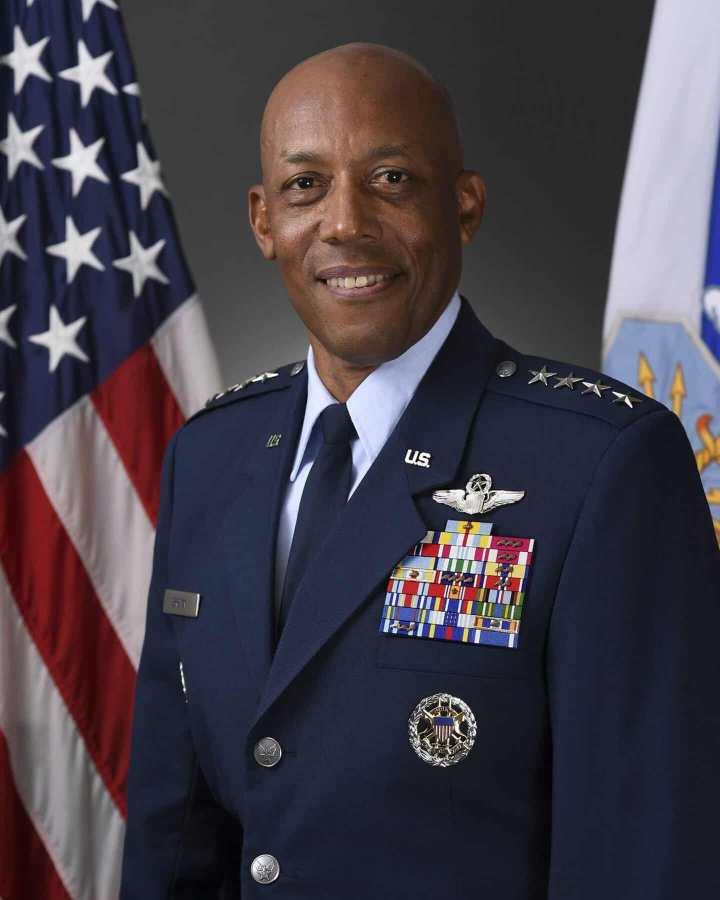
On June 9, 2020, four-star general Charles “CQ” Brown Jr. was unanimously confirmed by the U.S. Senate to the be the Air Force’s representative on the Joint Chiefs of Staff (JCS), thus becoming the first African American to both head a branch of the military and serve as an ex officio member on the JCS. Born into a military family in San Antonio, Texas, he was the grandson of Army Master Sergeant Robert E, Brown Jr. who led a segregated unit in World War II; the nephew of Army Colonel Robert E. Brown III.; and the son of Army artillery and intelligence specialist and Vietnam War veteran Col. Charles Q. Brown Sr. He and his younger brother and sister followed their father’s postings across Germany and the United States.
A civil engineering major at Texas Tech University, Brown was a distinguished student in the school’s Air Force ROTC program, earning his Second Lieutenant’s commission and commenced active duty in 1985. By the year 2000 he had achieved the rank of Lieutenant Colonel; earned a master’s degree in aeronautical science from Embry-Riddle Aeronautical University; piloted the F-16 fighter jet and several other aircraft; and had been a weapons instructor and flight commander.
Between 2000 and 2010 he flew combat missions in Iraq; was a National Defense Fellow, Institute for Defense Analyses, in Alexandria, Virginia; Commandant, USAF Weapons School, 57th Wing, Nellis Air Force Base, Nevada; Commander, 8th Fighter Wing, Kunsan Air Base, South Korea; and Director, Secretary of the Air Force and Chief of Staff Executive Action Group, Headquarters U.S. Air Force, Arlington, Virginia.
In 2011, Brown left as Commander, 31st Fighter Wing, Aviano Air Base, Italy, to become Deputy Director, Operations Directorate, U.S. Central Command, MacDill AFB, Florida. In 2014 he was made Director of Operations, Strategic Deterrence, and Nuclear Integration, Headquarters U.S. Air Forces in Europe-Air Forces Africa at Ramstein AB, Germany; and from 2015 to 2016 was Commander of the U.S. Air Forces Central Command, Combined Force Air Component Commander,
August 13, 2020 / Contributed By:
Robert Fikes
h ps://www.blackpast.org/african-american-history/charles-quinton -brown-jr-1962/
U.S. Central Command, Southwest Asia.

Since 2018, Brown had been Commander, Pacific Air Forces; Air Component Commander for U.S. Indo-Pacific Command; and Executive Director, Pacific Air Combat Operations Staff, Joint Base Pearl Harbor-Hickam, Hawaii. When he was promoted to General in 2018 he became only the ninth African American to reach four-star rank in the Air Force.
A member of Alpha Phi Alpha fraternity and an awardee of the Bronze Star and Legion of Merit, Brown and his wife, Sharene, have two sons.


Gen. Anthony J. Cotton is the Commander, United States Strategic Command, Offutt Air Force Base, Nebraska. He is responsible for one of 11 Unified Commands under the Department of Defense. USSTRATCOM is responsible for strategic deterrence, nuclear operations, global strike, missile defense, joint electromagnetic spectrum operations, analysis and targeting, and missile threat assessment. USSTRATCOM is comprised of 41,000 Soldiers, Sailors, Airmen, Marines, Guardians, and civilians who operate globally performing the command’s missions. The command also provides the Secretary of Defense and President a range of options to deter adversaries and assure allies.
Gen. Cotton entered the Air Force through the ROTC program in 1986 where he earned a bachelor’s degree in political science from North Carolina State University in Raleigh. He has commanded at the squadron, group, wing, and major command levels. He has served as the Vice Commander and Commander of the 341st Missile Wing, Commander of the 45th Space Wing, Director of the Eastern Range, Patrick AFB, Florida, Deputy Director of the National Reconnaissance Office, Commander 20th Air Force, Commander and President of Air University, as well as, Deputy Commander Air Force Global Strike Command.




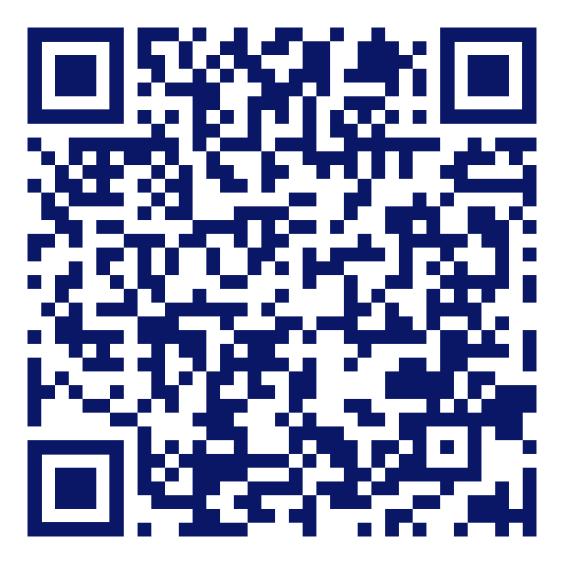









Aug 23, 2024 | Blog
We’re living in an exciting era of financial transformation. While physical cash is still around, it’s becoming increasingly clear that the future of money is digital. This shift can be confusing, especially regarding new forms of digital currency like cryptocurrency. Let’s explain what this means and explore some key regulations surrounding these digital assets.


Think about how often you use cash these days. Chances are, you’re more likely to swipe a card, tap your phone, or make an online transfer. This trend towards digital transactions is only accelerating, and cryptocurrencies represent the next frontier in this evolution.
Cryptocurrencies are digital or virtual currencies that use cryptography for security. Unlike traditional currencies issued by governments (called fiat currencies), cryptocurrencies operate on decentralized systems based on blockchain technology. Bitcoin is the most well-known example, but there are thousands of different cryptocurrencies in existence.
As cryptocurrencies gain popularity, governments and financial institutions worldwide are working to establish rules and guidelines. These regulations serve several purposes:
1. Protect consumers from fraud and scams


2. Prevent money laundering and other illegal activities
3. Ensure fair taxation
4. Maintain financial stability
1. Classification: Different countries classify cryptocurrencies in various ways – as property, commodities, or securities. This classification affects how they’re regulated and taxed.
2. Exchanges: Many countries require cryptocurrency exchanges (where you can buy and sell digital assets) to register with financial authorities and follow strict operating procedures.
3. Initial Coin Offerings (ICOs): These are fundraising methods for new cryptocurrency projects. Due to potential fraud risks, many countries have introduced specific regulations for ICOs.
4. Taxation: Most countries now have guidelines on how cryptocurrency transactions should be reported and taxed.
5. Anti-Money Laundering (AML) and Know Your Customer (KYC): These regulations require exchanges and other crypto businesses to verify user identities and report suspicious activities.
Cryptocurrency regulations vary significantly from country to country:
Some nations, like El Salvador, have embraced cryptocurrencies, even adopting Bitcoin as legal tender.
Others, like China, have taken a more restrictive approach, banning cryptocurrency trading and mining.
Many countries, including the United States and those in the European Union, are somewhere in the middle – allowing cryptocurrency use but working to establish comprehensive regulatory frameworks.
Regulating cryptocurrencies is a complex task. The technology is rapidly evolving, and the decentralized nature of many cryptocurrencies makes them
THE FUTURE OF MONEY IS DIGITAL, AND CRYPTOCURRENCIES ARE LIKELY TO PLAY A SIGNIFICANT ROLE IN THAT FUTURE!
difficult to control. Balancing innovation with consumer protection and financial stability is an ongoing challenge for regulators worldwide.
As we move further into the digital money age, it’s important to stay informed about cryptocurrency regulations in your country. If you’re interested in using or investing in cryptocurrencies:
1. Research the legal status and tax implications in your jurisdiction.
2. Use only reputable, regulated exchanges.
3. Be aware of the risks – cryptocurrencies can be volatile and are not typically backed by governments or central banks.
4. Keep detailed records of your transactions for tax purposes.
The future of money is digital, and cryptocurrencies are likely to play a significant role in that future. While the regulatory landscape is still evolving, understanding the basics can help you navigate this new financial frontier with confidence.
As you begin to explore the world of digital currencies, it’s crucial to have access to reliable, up-todate information. Here’s a valuable resource that can serve as your “Google for Cryptocurrency”: CoinMarketCap (https://coinmarketcap.com/) is a comprehensive platform where you can learn about various cryptocurrencies, track their prices, observe market trends, and much more. This website offers:
1. Real-time price data for thousands of cryptocurrencies
2. Market capitalization rankings
3. Trading volume information
4. Educational resources for beginners
5. News and updates from the crypto world
Whether you’re a curious newcomer or an experienced investor, CoinMarketCap can be an excellent
starting point for your cryptocurrency journey. Remember to always conduct thorough research and consider consulting with financial professionals before making any investment decisions.
As we embrace the digital money age, staying informed and using trusted resources will be key to navigating this exciting new financial landscape.
The Financial Lady (TFL) is a comprehensive financial planning firm founded and led by Bridgett Springer, located in Houston, TX. As a black woman-owned business established in 2015, we take pride in providing diverse perspectives and personalized financial solutions to our clients.
We offer a flexible approach to financial planning through fee-based, commission-based, and servicebased arrangements, allowing us to tailor our services to each client’s unique needs. Our firm specializes in helping individuals and families build, protect, and grow their wealth through comprehensive financial planning and advisory services.
We believe in creating lasting relationships with our clients by delivering personalized attention and strategic financial guidance that aligns with their goals and values. Through our commitment to excellence and client service, TFL has established itself as a trusted financial planning partner in the Houston community.
READ THESE BLOGS:
The Power of Weekly Debt Payments: A Game -Changing Strategy for Financial Freedom
Understanding Financial Literacy: The Key to Financial Freedom
Understanding Inflation and Economic Recovery: What You Need to Know


The word “Help” means to make it easier for someone, to do something for someone, to serve someone.
Because life will toss each of us on this journey some really hard blows, we will ALL need to be open to (1) helping others and (2) receiving help from others.
Trust me both scenarios will play out sooner or later… And Like my mother would say…..” just keep on living!”
Therefore, I decided to break down the word H.E.L.P., into an acrostic, and I ask that you walk with me through the Word of God found in the book of Matthew 17:14-20 NIV https://bible.com/bible/111/ mat.17.14-20.NIV —— as we review this historical event together we can glean from our example of a man who asked Jesus’s disciples for help.
The text reads:
Matthew 17:14 When they came to the crowd, a man approached Jesus and knelt before him. 15 “Lord, have mercy on my son,” he said. “He has seizures and is suffering greatly. He often falls into the fire or into the water. 16 I brought him to your disciples, but they could not heal him.”
17 “You unbelieving and perverse generation,” Jesus replied, “how long shall I stay with you? How long shall I put up with you? Bring the boy here to me.” 18 Jesus rebuked the demon, and it came out of the boy, and he was healed at that moment.
19 Then the disciples came to Jesus in private and asked, “Why couldn’t we drive it out?”
20 He replied, “Because you have so little faith. Truly I tell you, if you have faith as small as a mustard seed, you can say to this mountain, ‘Move from here to there,’ and it will move. Nothing will be impossible for you.”

Matthew 17:14-20



The questions I will present to you:
Q1. What do you do when your faith is confronted with fire?
Q2. In what area(s) in your life, do you feel you have a faith deficit?
I write this to tell you if you feel like you are in a deficit… it’s okay cause all you need is “faith the SIZE of a mustard (.) seed”.
H (heart, healing, HIM), not him the dad who brought the son, nor him the son, nor the disciples but HIM, Jesus!
E (epileptic emergency, exorcism) Exorcism is the act or rite of driving out unclean spirits.
L (Love) - what great LOVE SHOWN by the father - then greater love by Jesus 1 Cor 13:4-8
P (Passion), We are 10 books from the crucifixion, 11 books from the resurrection, and the greatest word I could find for this letter was “passion,” the Passion of our Savior to impact lives, and that passion was demonstrated from the time He stepped out of heaven to eternity.
Passion is the theological term used to describe Jesus’ suffering prior to and including his crucifixion.
See here was a man with a situation requiring major
It is absolutely impossible for people to encounter Jesus and not experience change!!!
help; read with me again his situation in verses 14-16
Now, to see a different angle of the severity of his situation…. humor me and flip with me to the book of Mark, and let’s gather more info from Chapter 9, Verses 14-29
and because the disciples of Christ (you know …. us, we) couldn’t do it, and truly no one can fake the anointing power!!!
Therefore, the best thing he (we, us) can do for others is bring them to Jesus!!!
It is absolutely impossible for people to encounter Jesus and not experience change!!!
“When they came to the crowd, a man approached Jesus and knelt before him. “Lord, have mercy on my son,” he said. “He has seizures and is suffering greatly. He often falls into the fire or into the water. I brought him to your disciples, but they could not heal him.” “You unbelieving and perverse generation,” Jesus replied, “how long shall I stay with you? How long shall I put up with you? Bring the boy here to me.” Jesus rebuked the demon, and it came out of the boy, and he was healed at that moment. Then, the disciples came to Jesus in private and asked, “Why couldn’t we drive it out?” He replied, “Because you have so little faith. Truly, I tell you, if you have faith as small as a mustard seed, you can say to this mountain, ‘Move from here to there,’ and it will move. Nothing will be impossible for you.”
mustard (.) seed” faith.

D^ge`W_[WaY
What
Black Church Studies Featuring Marshall Hatch
throughout US history?
Rev. Dr. Marshall Hatch takes viewers on a journey through the history and impact of the Black church in America, from the religion of white slaveholders passed to enslaved peoples to the role of the church today in the era of Black Lives Matter. He teaches on the Civil War, Reconstruction, the development of Black denominations due to segregation, prominent Black church leaders and theologians, the Civil Rights era, and the new time of racial reckoning in America today.
The Black church has guided culture, provided hope in hard times, and been the motivating and organizing force behind pushes for the rights of Black Americans. While church attendance is decreasing, Hatch contends that the Black church still has an important role to play in American life.
Presented by Northern Seminary.
Trailer Marshall Hatch
Session 1 The Origins of the Black Church in America
Session 2 The Development of Black Churches, Black Church Culture, & Black Denominations
Session 3 The Black Church: The Center of Black Life and Aspirations
Session 4 Jim Crow Segregation, the “New Negro,” and Cultural Renaissance (1900-1954)
Session 5 The Black Church and the Civil Rights Movement
Session 6 Black Power and Black Theology
Session 7 Black Millennial Trends and the Black Church
Session 8 Does the Black Church Matter in the Era of Black Lives Matter?
Session 9 Epilogue—Marshall Hatch
is the Black church? What role has it played in the culture and liberation of Black Americans




Meet the standout soldiers, spies and home front forces who fought in American conflicts, from the Revolution to World War II
ThroughoutU.S.history,BlackAmericanshavefought onbehalfofanationthat enslaved,terrorizedanddiscriminatedagainstthem.BeforeEmancipation, manyfoughtfor thechancetoearntheirpersonalfreedom.Later,many fought toshowthattheirsacrificeanddedicationwarrantedfirst-classcitizenship,withequalrights.
BeforeEmancipation,generalswerereluctanttoput firearmsinthehandsoftheenslavedand formerlyenslaved, lest thatsparkreprisalsanduprisings.Fromthenation's beginning,theyexpresseddoubtthatBlacksoldiershad thementalcapacity,disciplineorfortitudetofight.Asa result,Blacktroopswererelegatedtomenialsupportdutieslikediggingtrenches,handling foodorcartingsupplies.
Itwasusuallyonlywhentroopnumberslaggedthat generalsallowedBlackbattalionstofight.Andwhentheydid, theyoftenreceivedthemost dangerousassignmentsand fought forlongerstretchesthanotherunits.Andtheydid so insegregatedconditions,until1948,whenPresident HarryTrumanendedsegregationinthenation'smilitary.
DuringtheAmericanRevolution,thousandsofBlack Americansfought—onbothsidesoftheconflict.But unliketheirwhitecounterparts,theyweren’t just fightingfor thecolony'sindependence,ortomaintainBritishcontrol. Mosttookuparmshopingtobefreed fromslavery.
Historiansestimatethat between5,000and8,000Africandescendedpeopleparticipated intheRevolutiononthe Patriotside,andthatupwardof20,000servedthecrown.


AsAmerica’sCivilWarraged,withtheenslavementof millionsofpeoplehanginginthebalance,AfricanAmericansdidn’t just sitonthesidelines.Whetherenslaved,escapedorbornfree, manysoughttoactivelyaffecttheoutcome.
Fromfightingonbloodybattlefieldstoespionagebehind enemylines;fromdaringescapestopoliticalmaneuvering;fromsavingwoundedsoldierstoteachingthemhow toread,thesesixAfricanAmericansfoughttoabolish slaveryanddiscrimination.Intheirownway,each changedthecourseofAmericanhistory.
Likemanyveteransofthekilling fieldsofWorldWarI, HoracePippinhadatoughtimeshakingoffthememories. Sointhedecadeafterthewarhecapturedthem,and tamedthem, insidesketch-filledcompositionbooks,filling pageafterpagewithhistidyhandwriting.Thespellingand grammarareoftenmakeshift.Thedrawingsarerendered inpencilandcrayon.Butthestories—eveninPippin’s muted,matter-of-facttelling—offerararefirst-personaccountoftheharrowingcombat experienceoftheHarlem Hellfighters,themost celebratedU.S.regimentofAfrican AmericansoldiersduringWorld WarI.
Asthefirst Blackaviatorsto serveintheU.S.ArmyAir Corps,theTuskegeeAirmenbrokethroughamassive segregationbarrier intheAmericanmilitary.Theirsuccess andheroismduringWorldWarII,fightingGermansinthe skiesoverEurope,shatteredpervasivestereotypesthat AfricanAmericanshadneitherthecharacternortheaptitudeforcombat.Andtheirachievementslaidcrucial groundworkforcivilrightsprogressinthedecadesto come.
RosietheRiveter—thesteely-eyedWorldWarIIheroine withherredbandanna,bluecoverallsand flexedbicep— standsasoneofAmerica’smost indelibleimages.The imagehascometorepresentthesteadfast Americanworkingwoman,embodyingmillionsoffemalelaborerswho keptthefactoriesandofficesoftheU.S.defenseindustries humming.But whattheiconic"Rosie"imagedoesn’t conveyisthediversityofthat workforce—specificallythe morethanhalf-million“BlackRosies”who worked alongsidetheirwhitecounterpartsinthewareffort.




"A picture is worth a thousand words" means that images tell a better story than words. By using images, you can convey your message in a visual representation that impacts others.


Shhhh! Don’t Talk Just Listen to their Faces


These historically Black colleges and universities were compared only with one another for these rankings. To be on the list, a school must be currently designated by the U.S. Department of Education as an HBCU. To qualify for the U.S. News rankings, an HBCU also must be an undergraduate baccalaureategranting institution that enrolls primarily first-year, first-time students and must be a school that is part of the 2025 Best Colleges rankings.
#1 Spelman College is a private institution that was founded in 1881. It has a total undergraduate enrollment of 2,588 (fall 2023), its setting is urban, and the campus size is 39 acres. It utilizes a semester-based academic calendar. Spelman College's ranking in the 2025 edition of Best Colleges is National Liberal Arts Colleges, #40. Its tuition and fees are $31,556.
#2 Howard University is a private institution that was founded in 1867. It has a total undergraduate enrollment of 10,190 (fall 2023), and the campus size is 257 acres. It utilizes a semester-based academic calendar. Howard University's ranking in the 2025 edition of Best Colleges is National Universities, #86. Its tuition and fees are $35,810.
(Tied) #3 Florida A&M University is a public institution that was founded in 1887. It has a total undergraduate enrollment of 7,796 (fall 2023), and the campus size is 422 acres. It utilizes a semester-based academic calendar. Florida A&M University's ranking in the 2025 edition of Best Colleges is National Universities, #152. Its in-state tuition and fees are $5,785; out-of-state tuition and fees are $17,725.
(Tied) #3 Tuskegee University is a private institution that was founded in 1881. It has a total undergraduate enrollment of 2,400 (fall 2023), and the campus size is 5,000 acres. It utilizes a semesterbased academic calendar. Tuskegee University's ranking in the 2025 edition of Best Colleges is Regional Universities South, #9. Its tuition and fees are $25,386.
https://www.usnews.com/best-colleges/rankings/hbcu? _sort=rank&_sortDirection=asc



#5 Morehouse College is a private institution that was founded in 1867. It has a total undergraduate enrollment of 2,738 (fall 2023), its setting is urban, and the campus size is 66 acres. It utilizes a semester -based academic calendar. Morehouse College's ranking in the 2025 edition of Best Colleges is National Liberal Arts Colleges, #95. Its tuition and fees are $32,893.
#6 Xavier University of Louisiana is a private institution that was founded in 1925. It has a total undergraduate enrollment of 2,591 (fall 2023), its setting is urban, and the campus size is 66 acres. It utilizes a semester-based academic calendar. Xavier University of Louisiana's ranking in the 2025 edition of Best Colleges is Regional Universities South, #20. Its tuition and fees are $28,979.
#7 Hampton University is a private institution that was founded in 1868. It has a total undergraduate enrollment of 3,255 (fall 2023), and the campus size is 314 acres. It utilizes a semester-based academic calendar. Hampton University's ranking in the 2025 edition of Best Colleges is National Universities, #273. Its tuition and fees are $30,842.
#8 North Carolina Agricultural and Technical State University is a public institution that was founded in 1891. It has a total undergraduate enrollment of 12,216 (fall 2023), its setting is urban, and the campus size is 800 acres. It utilizes a semester-based academic calendar. North Carolina Agricultural and Technical State University's ranking in the 2025 edition of Best Colleges is National Universities, #231. Its in-state tuition and fees are $6,733; out-of-state tuition and fees are $20,243.
















